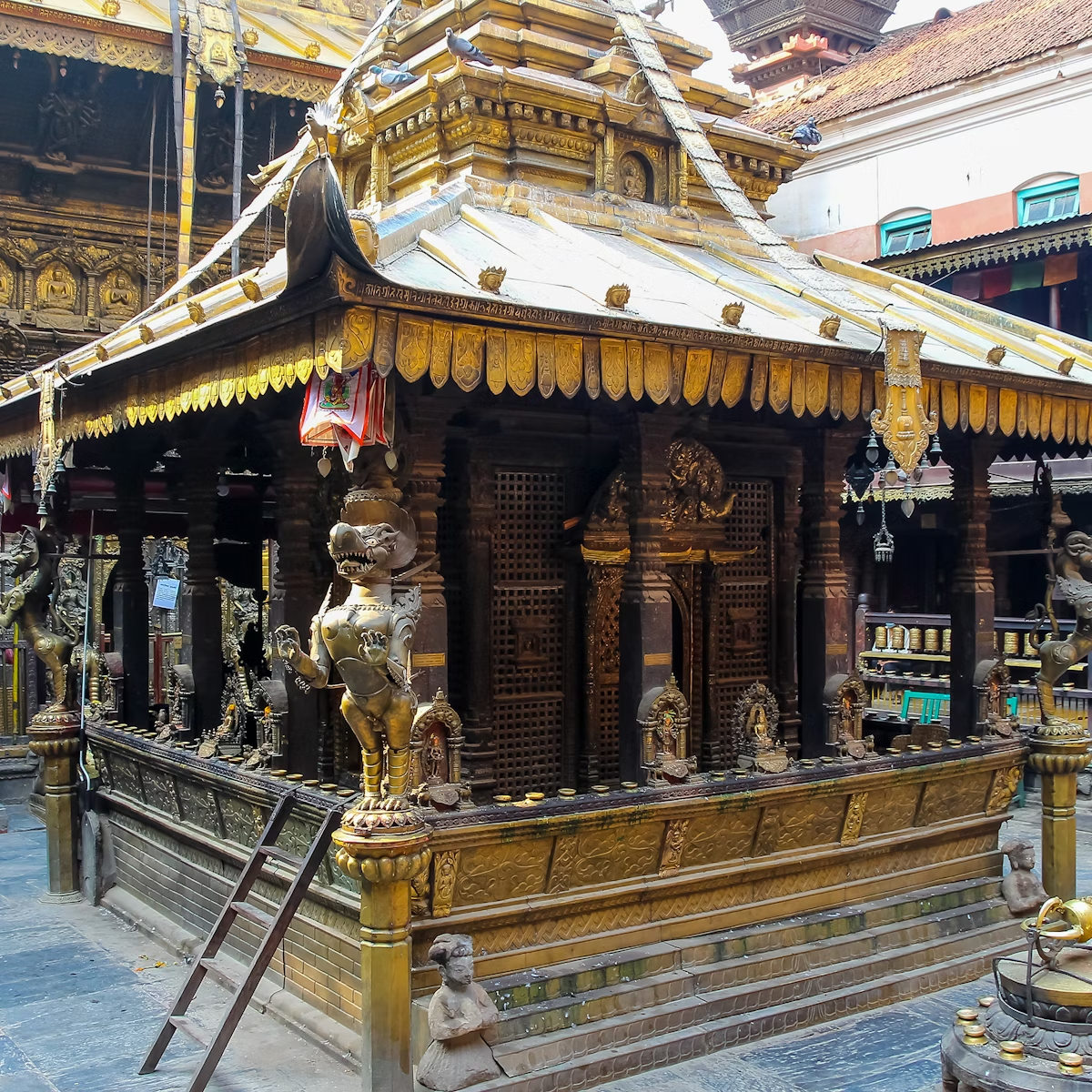As you step through the entryway of this hard-to-find courtyard in the southeast of Patan, the temple suddenly looms above you, crammed in like a plant straining to get some sunlight. Built in the Indian shikhara style, the shrine takes its name from the hundreds of terracotta tiles that cover it, each bearing an image of the Buddha. The shikhara is upright, although it was cloaked in heavy-duty scaffolding when we last visited.
The temple dates from 1585, but was totally rebuilt after the 1934 earthquake. Unfortunately, without plans to work from, the builders ended up with a different-looking temple, and had enough bricks and tiles left over to construct a smaller shrine to Maya Devi, the Buddha’s mother, in the corner of the courtyard. The temple is loosely modelled on the Mahabouddha Temple at Bodhgaya in India, where the Buddha gained enlightenment.
The surrounding lanes are full of shops selling high-quality Patan-style metal statues. The roof terrace of the shop at the back of the courtyard has a good view of the temple.
To reach the Mahabouddha Temple, you must walk southeast from Durbar Sq along Hakha Tole, passing a series of small Vaishnavite and Shaivite temples. When you reach Sundhara Tole, with its temple and sunken hiti (water tank) with three brass water spouts, turn right and look for the tiny doorway leading to the temple.







